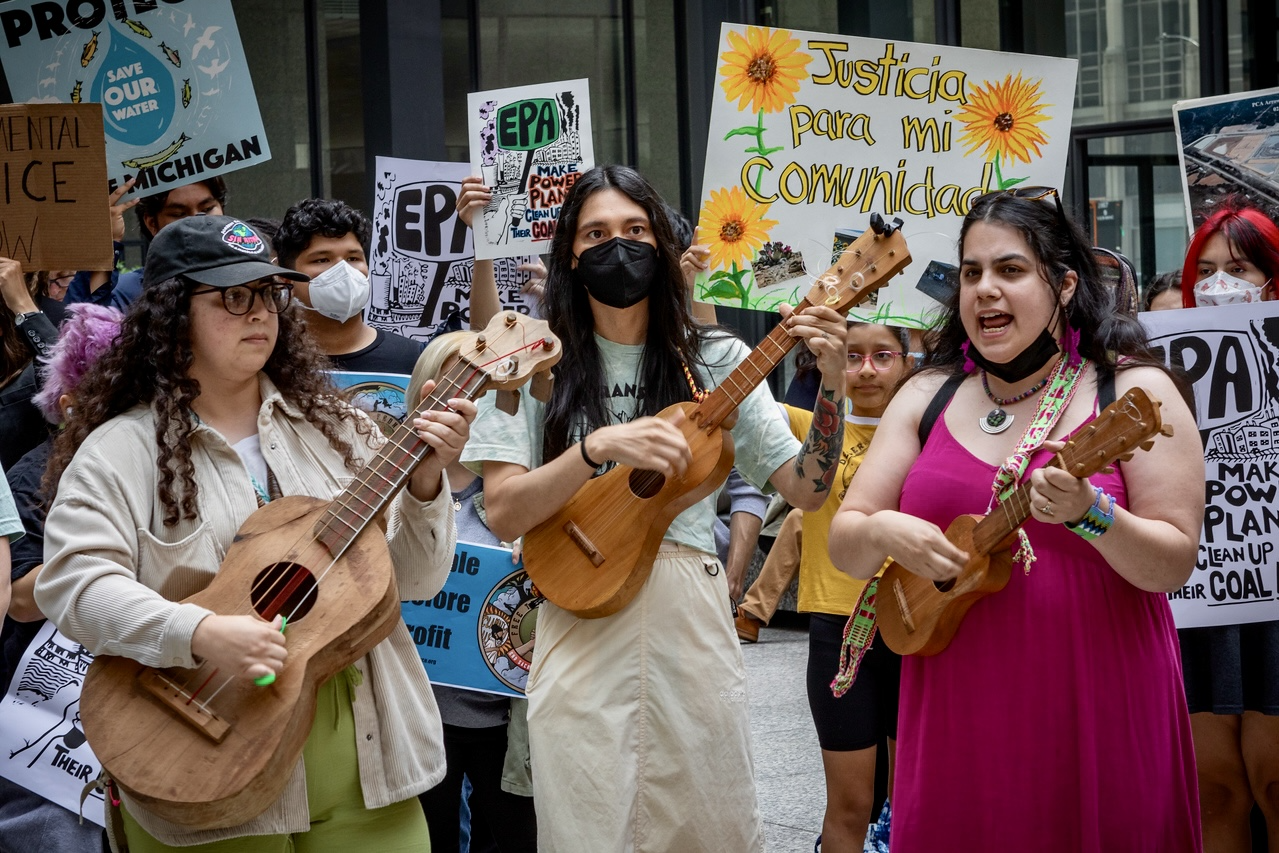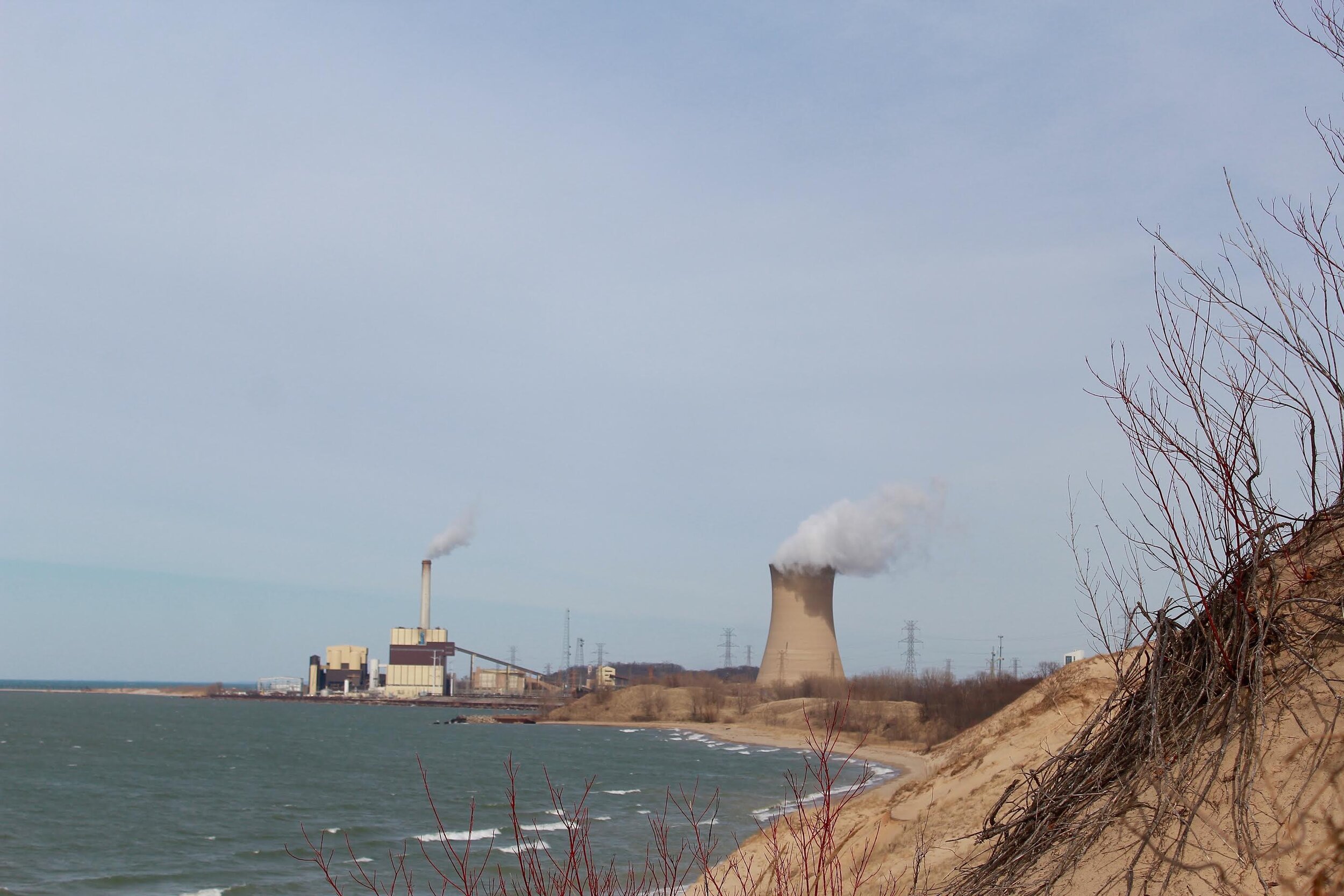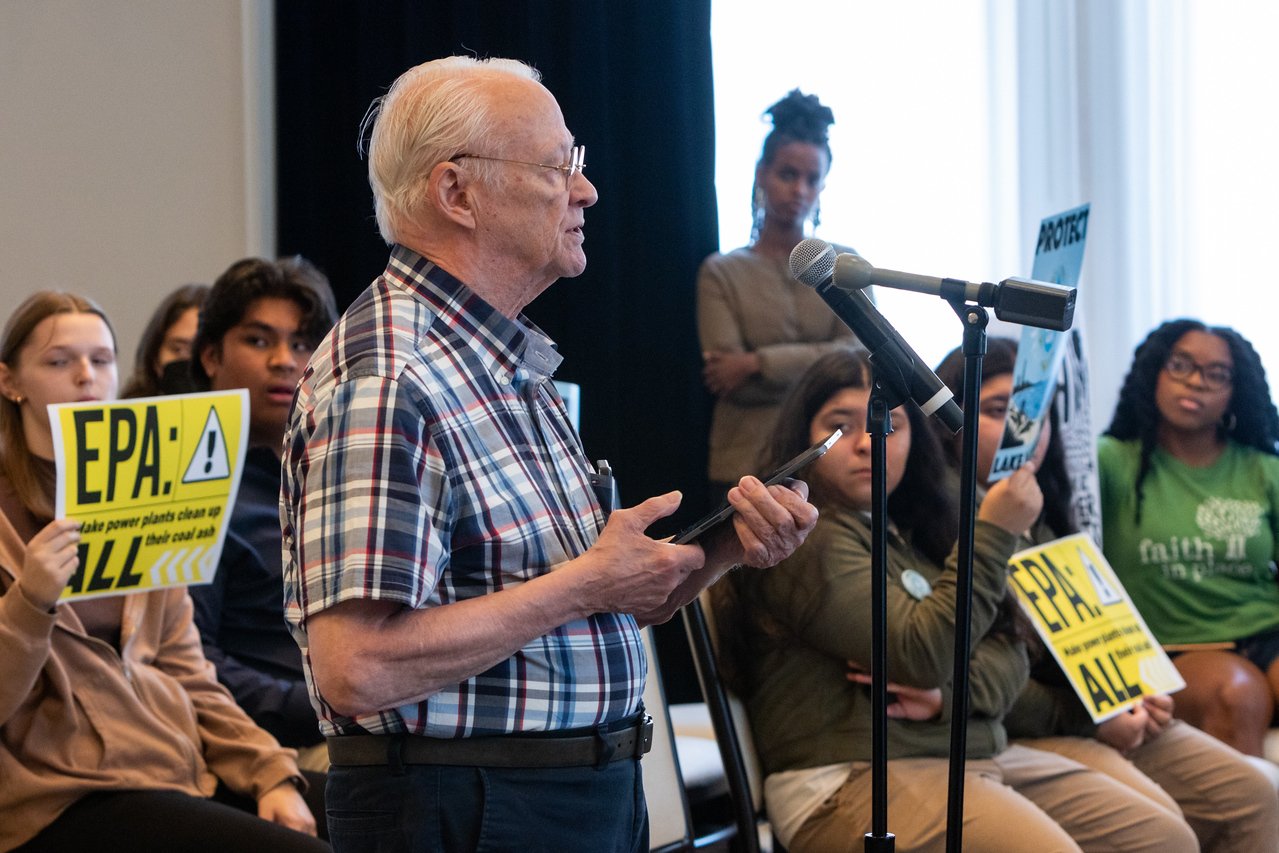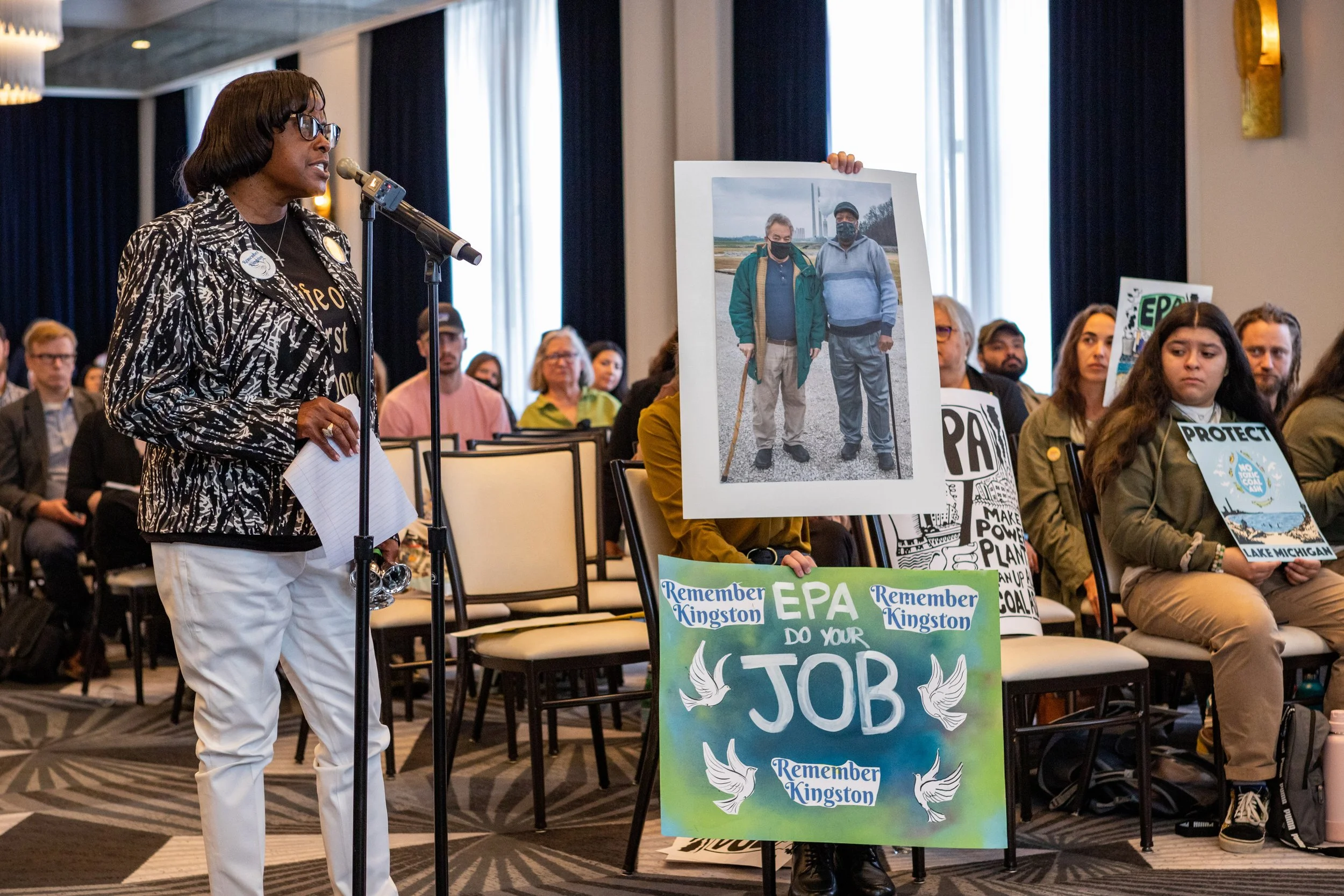
Close The Coal Ash Loopholes EPA Campaign
Coal ash, or coal combustion residuals (CCR), is the toxic waste from coal burning for electricity. It contains a poisonous mixture of substances harmful to human health, and it is linked to hazardous health effects, such as asthma, kidney disease, heart disease, cancer, and even death. Indiana is home to more coal ash sites than any other state, the majority of them are leaking and in contaminating groundwater and surface water supplies.
In 2015, under the Obama Administration, the Environmental Protection Agency (EPA) adopted its first-ever safeguards to protect people from coal ash, known as the Coal Combustion Residuals Rule. The rule was published in response to the largest industrial disaster in U.S. history at Tennessee Valley Authority’s Kingston Fossil Plant, which blanketed the surrounding community with 1 billion gallons of toxic coal ash sludge and sickened hundreds of cleanup workers; a lawsuit resulted.
However, when issued, the rule left behind dangerous loopholes. The agency excluded coal ash in landfills and waste piles that stopped receiving waste before the law went into effect, as well as dumpsites at power plants that had stopped producing power, equating to about half a billion tons of coal ash.
UPDATE: On May 8, 2024, after years of litigation and grassroots organizing, for the first time in history, the EPA issued the Legacy Coal Combustion Residuals (CCR) Surface Impoundments and CCR Management Units Rule, extending federal monitoring and cleanup requirements to hundreds of previously excluded inactive, older coal ash landfills and ponds. Among these sites that must now be cleaned up is one we fought long and hard for - the Michigan City Generating Station.
In March 2025, EPA Administrator Lee Zeldin's massive deregulation announcement outlined the EPA's intent to revise the federal Coal Combustion Residuals Rule, including pushing back compliance deadlines. This will likely result in changes to Indiana's rule and further delay the publication of the state rule through the Indiana Department of Environmental Management. The EPA says it aims to complete rule changes within a year.
Legal Action Timeline
-
Earthjustice files a lawsuit on behalf of environmental, community, and civil rights groups for the agency’s failure to regulate these legacy coal ash sites and close the loopholes. JTNWI’s executive director is a standing declarant in the suit.
According to the lawsuit, if the EPA had followed the law (the Resource Conservation and Recovery Act), “basic safeguards would be in place for inactive CCR [coal combustion residuals] landfills that would keep coal ash toxins out of our drinking water, air, rivers, lakes, and streams, and require remediation at the scores of sites already known to be contaminating water at dangerous levels.”
-
JTNWI delivers thousands of petitions and a joint letter to then U.S. EPA Administrator Michael Regan and Region 5 Administrator Debra Shore in Chicago on behalf of dozens of Midwest and national organizations supporting the lawsuit’s demands to close the loophole once and for all.
-
The lawsuit leads to a groundbreaking consent decree that commits the EPA to revisit the Coal Combustion Residuals Rule.
-
On May 17, 2023, the EPA issues a new draft rule that proposes to finally begin closing loopholes that have exempted half of our nation’s coal ash waste from federal regulation.
If the rule goes into effect, for the first time in history, hundreds of older coal ash landfills, legacy ponds, and fill sites nationwide will now be subject to groundwater monitoring, closure, and cleanup.
-
The EPA publishes the final rule.

The final EPA rule symbolizes hope for the hundreds of environmental justice communities, like Michigan City, living near toxic coal ash sites.
Michigan City Spotlight
In Michigan City, Indiana, NIPSCO’s Michigan City Generating Station (MCGS) has towered above the shores of Lake Michigan for nearly a century. For decades, NIPSCO began disposing of its coal ash in a landfill in the neighboring Town of Pines. The landfill began to leak, contaminating the town’s drinking water and soil with 1 million tons of coal ash. Due to community members organized as People In Need of Environmental Safety, the EPA later declared the site an Alternative Superfund site.
Today, history is at risk of repeating itself as an estimated 2 million cubic yards of fill containing toxic coal ash rests on “made land” that extends into Lake Michigan at the MCGS and is held back from a catastrophe only by a deteriorating steel sea wall that is more than 70 years old. The plant’s environmental justice footprint is felt deeply by low-income and residents of color in the neighboring community on the city’s west side.
According to NIPSCO’s own reports, the huge coal ash deposit is contaminating the onsite groundwater and leaking into Lake Michigan and Trail Creek, which is further threatened by the worsening climate crisis. Because of the legacy nature of this coal ash (if stockpiled before the 2015 EPA CCR Rule, it is considered “legacy”), it was not previously subject to the federal rule, allowing NIPSCO to avoid responsibility for cleaning it up.
UPDATE: As we anticipate the scheduled closure of the MCGS in 2028, a new development has transpired. A settlement agreement between NIPSCO and the LaPorte County Commissioners, and other parties, resulting from the utility’s electric rate hike request before the Indiana Utility Regulatory Commission, calls for a study to evaluate the possibility of a combined gas cycle turbine, peaker gas plant, battery storage, or other energy technologies at the MCGS site. JTNWI is working diligently to advocate for a complete cleanup and decommissioning of the site and a community-led vision and reuse that supports job creation, bolsters the local economy, and promotes equitable redistribution of resources and power.























































